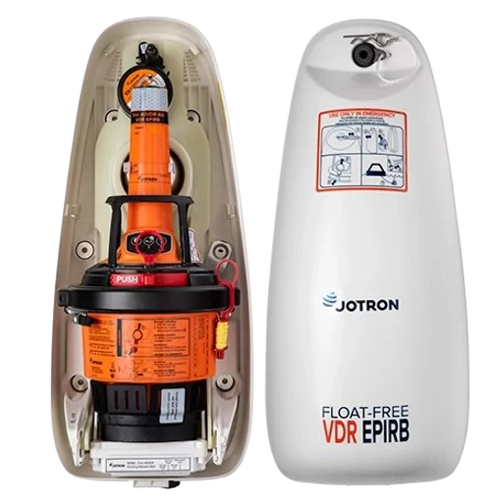A Comprehensive Guide to the Types of Communication Equipment on Modern Ship
At Seanav Marine, we take pride in providing you with the most up-to-date information on the types of Communication equipment used on modern ship. With our comprehensive expertise in the maritime industry and our dedication to delivering exceptional content, we aim to outrank other websites and offer you valuable insights into this crucial aspect of ship Communication. In this article, we will delve into the various types of Communication equipment utilized on modern ship, offering you a detailed overview of each category.
EPIRB (Emergency Position-Indicating Radio Beacon):
EPIRBs are distress beacons used by ships and boats to transmit a distress signal in case of an emergency. When activated, they transmit a radio signal that can be detected by satellite systems, enabling search and rescue authorities to locate the vessel.

SART (Search and Rescue Transponder):
SARTs are radar transponders used in marine emergencies to enhance the detection and location of a survival craft or distressed vessel. When a radar signal hits the SART, it automatically responds by providing a visual indication on the radar display of nearby ships or aircraft.
VHF DSC Radios (Very High-Frequency Digital Selective Calling Radios):
VHF DSC radios are two-way communication devices used in maritime operations. They utilize VHF frequencies and digital selective calling technology to make distress calls and communicate with other vessels or shore stations.
GMDSS (Global Maritime Distress and Safety System):
GMDSS is an internationally recognized set of communication protocols and equipment designed to enhance maritime safety. It integrates various communication devices, including EPIRBs, SARTs, VHF DSC radios, and satellite systems, to provide efficient and reliable distress alerting and communication capabilities.
HF/MF SSB Radios (High-Frequency/Medium-Frequency Single Sideband Radios):
HF/MF SSB radios are long-range communication systems used in maritime operations. They operate on high and medium frequencies and enable long-distance voice communication, weather information reception, and emergency communication.

INMARSAT-C:
INMARSAT-C is a satellite communication system widely used in the maritime industry. It provides two-way data messaging, distress alerting, and position reporting services, allowing ships to stay connected with shore authorities and other vessels.
LRIT (Long-Range Identification and Tracking):
LRIT is a system mandated by the International Maritime Organization (IMO) to track the movement of vessels. It utilizes satellite communication to transmit vessel identification, position, and other related information to coastal authorities for security and monitoring purposes.
SSAS (Ship Security Alert System):
SSAS is a security system required on certain vessels for enhancing maritime security. It enables discreet alerting of security threats to designated authorities ashore by transmitting an alarm signal via satellite communication.
NAVTEX (Navigational Telex):
NAVTEX is a maritime communication system used to broadcast navigational and meteorological warnings, forecasts, and other safety-related information. It operates on designated frequencies and provides automatic reception of information on ships equipped with NAVTEX receivers.
FBB (Fleet Broadband):
Fleet Broadband is a high-speed satellite communication service designed for maritime use. It offers reliable voice calling, internet connectivity, email services, and data transfer capabilities to keep vessels connected to shore and enable crew communication.
VSAT (Very Small Aperture Terminal):
VSAT is a satellite communication technology used in the maritime industry to establish two-way data and voice communication. It employs small satellite dish antennas and provides broadband connectivity for various applications, including internet access and voice calls.
Satellite TV:
Satellite TV systems are used on vessels to receive television programming via satellite signals. They allow crew members to access news, entertainment, and other TV content while at sea.
PABX (Private Automatic Branch Exchange):
PABX is a telephone exchange system used on ships to manage internal and external voice communication. It enables internal phone calls between different areas of the vessel and connects to external networks for external calls.
Public Address:
Public Address systems are used to broadcast announcements and messages throughout a ship. They ensure effective communication with passengers and crew members by amplifying announcements through speakers placed in various areas of the vessel.
Talkback Systems:
Talkback systems are communication systems used on ships for internal communication between different areas or departments. They typically consist of dedicated intercom devices or telephone systems that allow crew members to communicate with each other by pressing a button or picking up a handset.
Sound Power Telephone:
Sound Power Telephones, also known as sound-powered telephones or speaking tubes, are simple communication devices used on ships. They rely on acoustic transmission through a series of pipes or tubes to allow voice communication between different areas of the vessel, particularly in situations where electrical communication systems may be compromised.
These marine communication equipment and systems play vital roles in ensuring the safety, security, and efficient operation of vessels at sea. They facilitate distress alerting, navigation, coordination, and internal communication, keeping maritime operations connected and informed.


Latest Products
YDK Technologies MKN020 Gyro compass connection box
AED 3,960.0Original price was: AED 3,960.0.AED 2,850.0Current price is: AED 2,850.0.Onwa KM-8X 5-in-1 Marine Bundle Set Radome – GPS, Chartplotter, EchoSounder, AIS, Radar
8-inch GPS Chart Plotter with AIS and Radar
Onwa KM-8A (BUNDLE) 8-inch Color TFT LCD GPS Chart Plotter with Class B+ AIS Transponder MFD [BUNDLE]